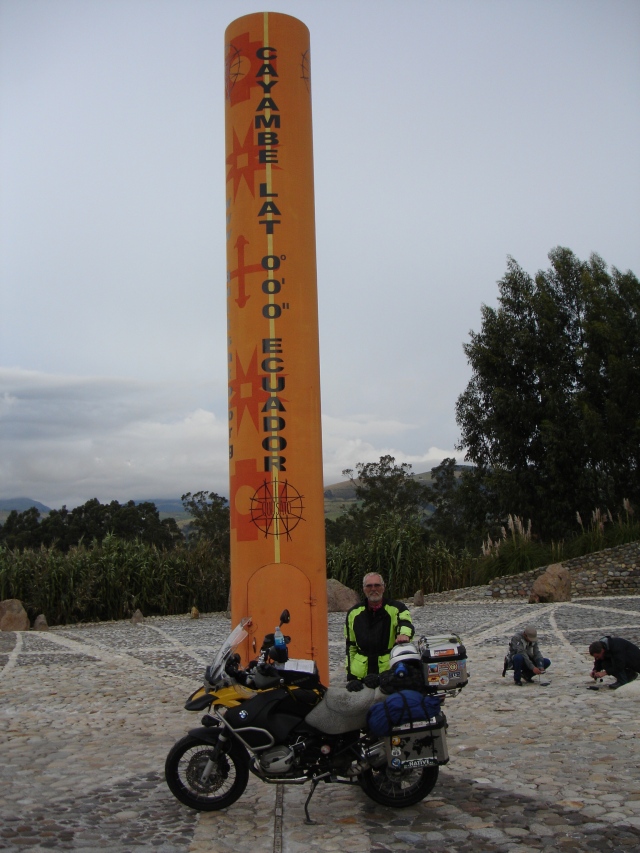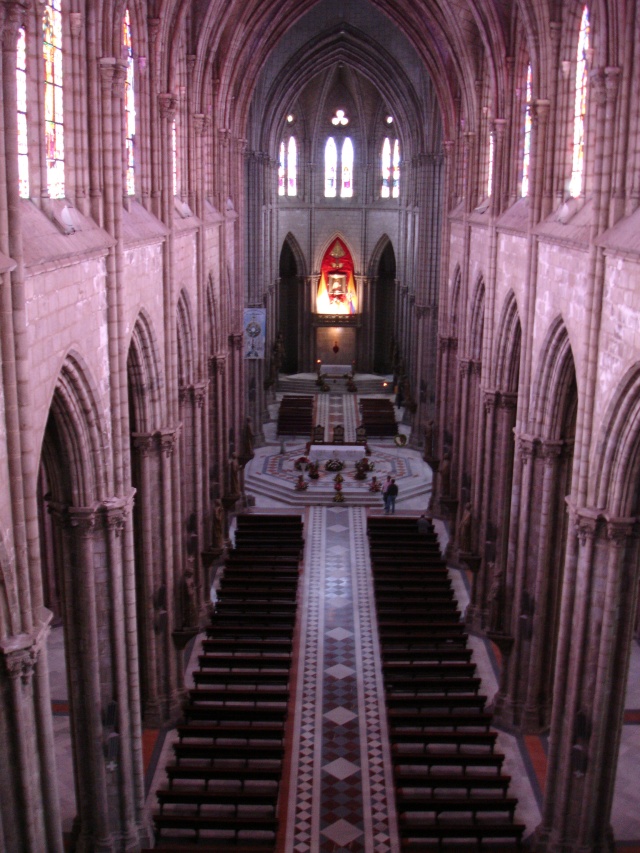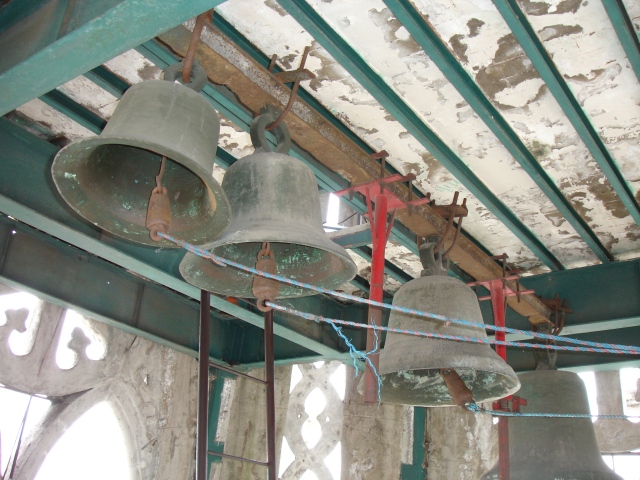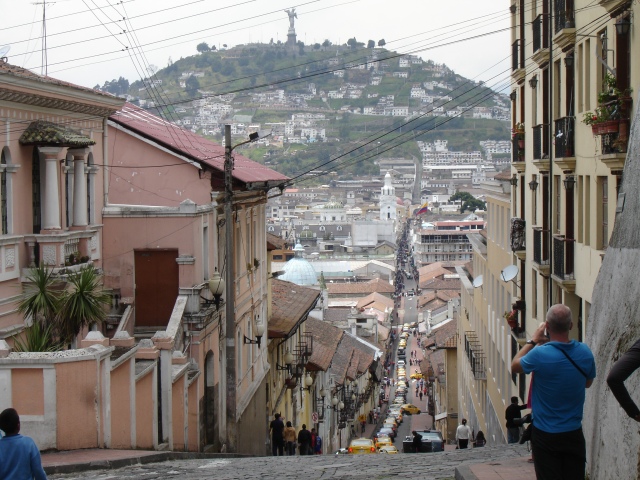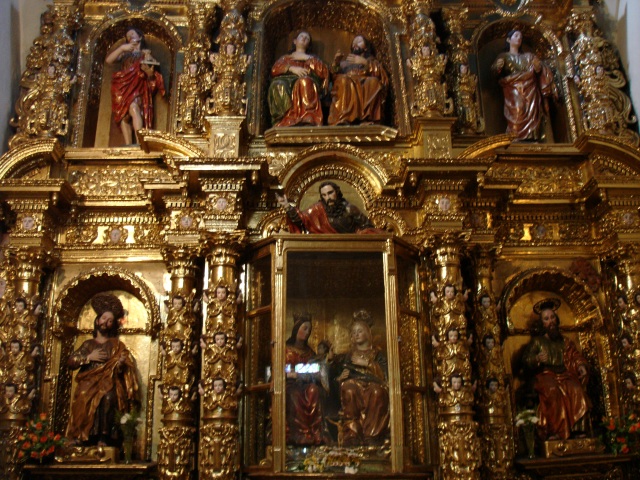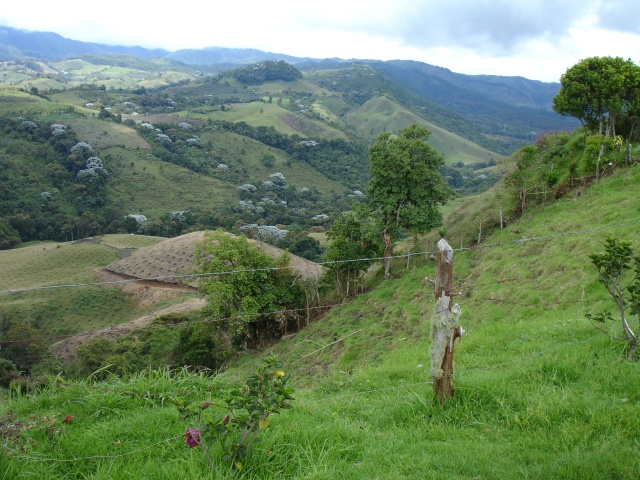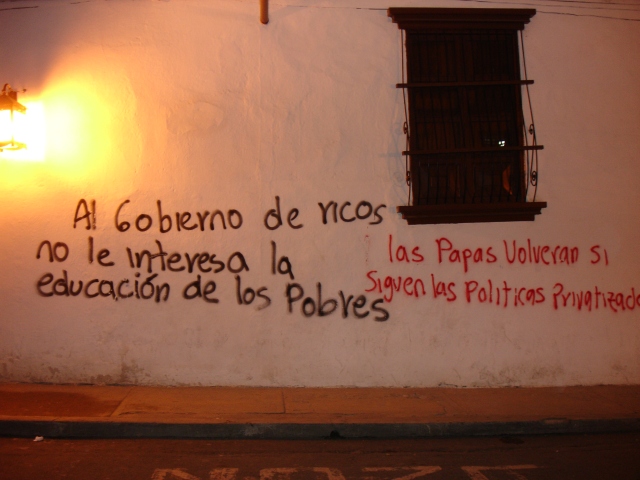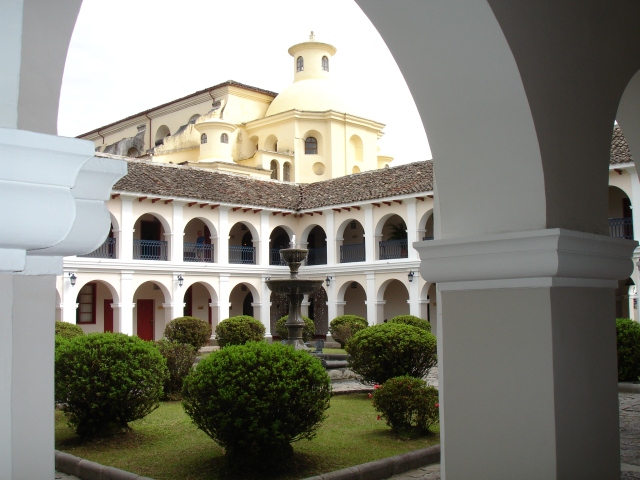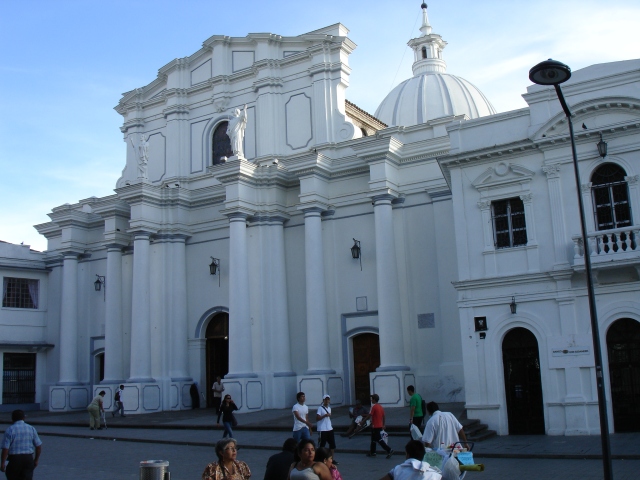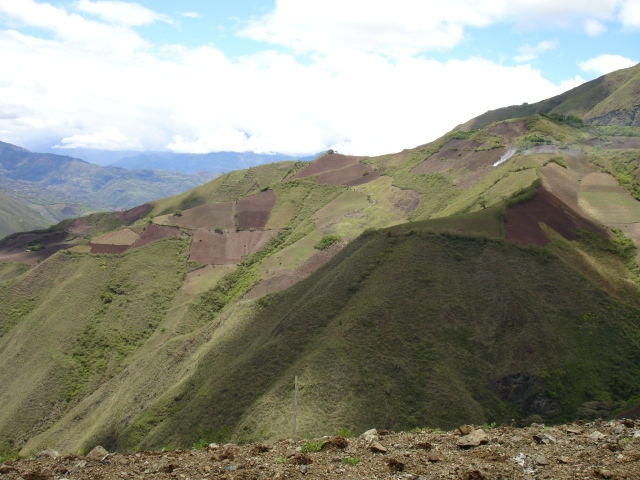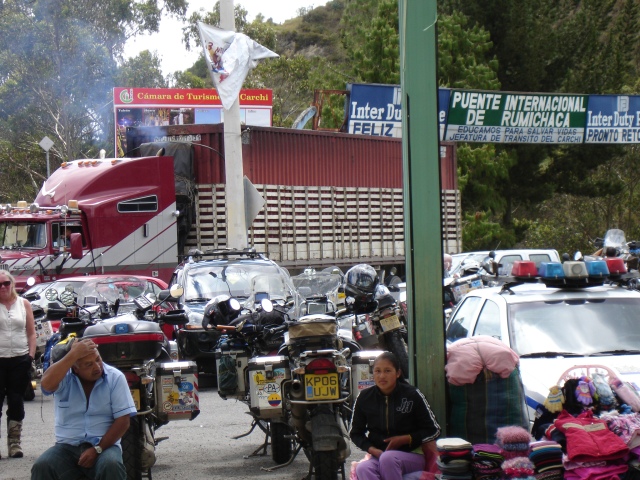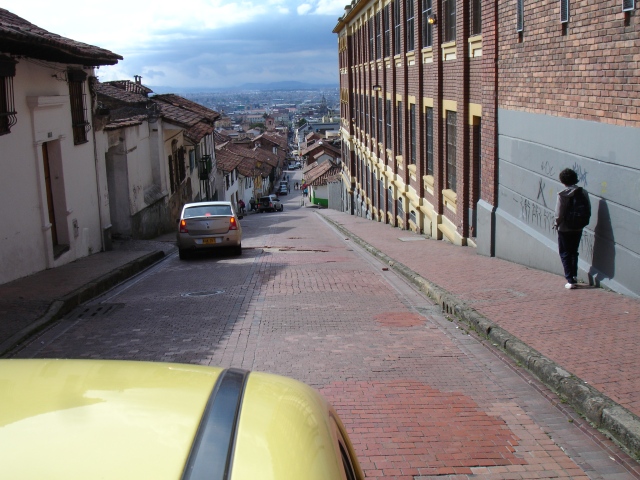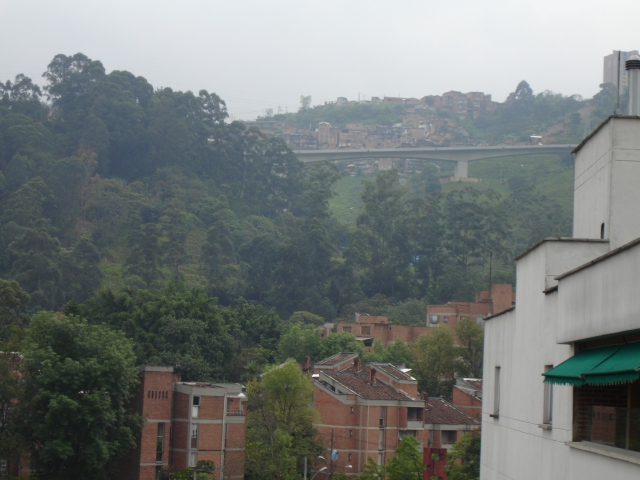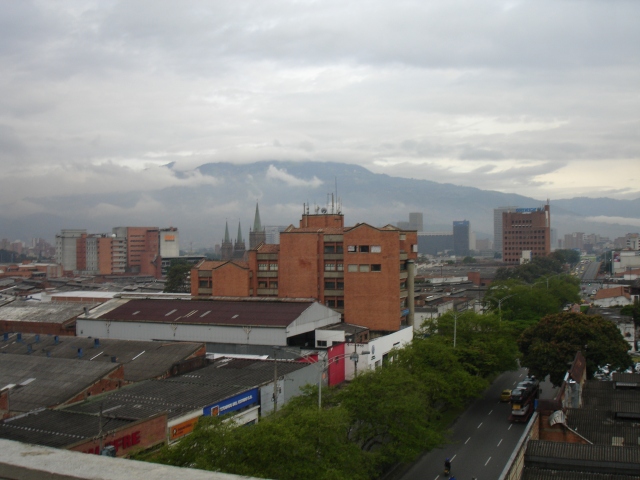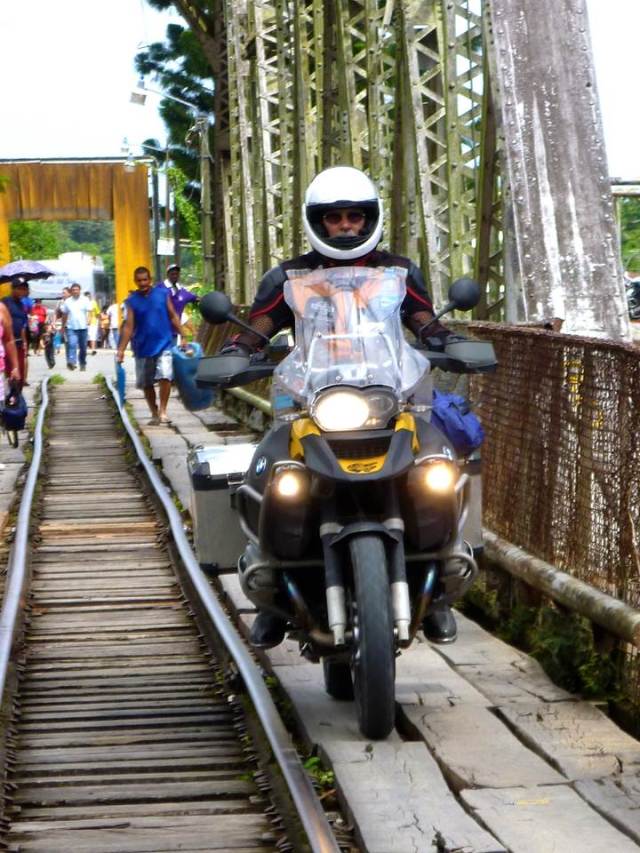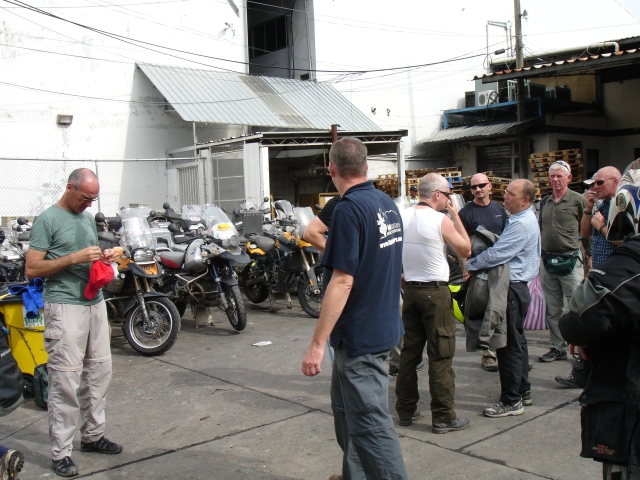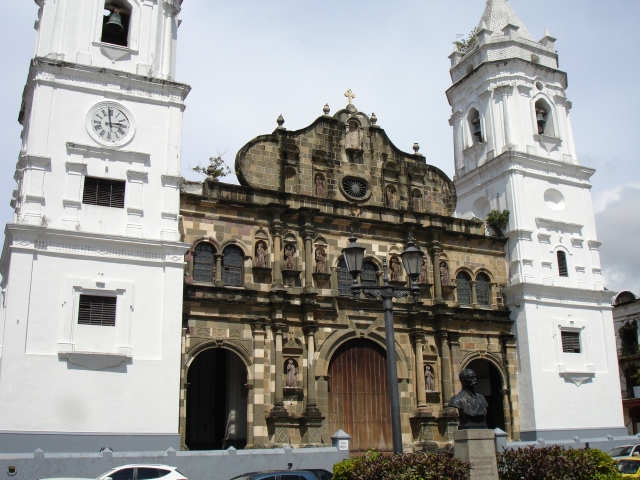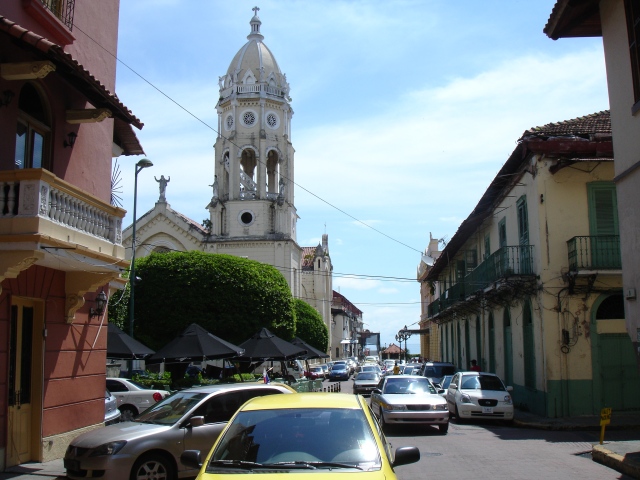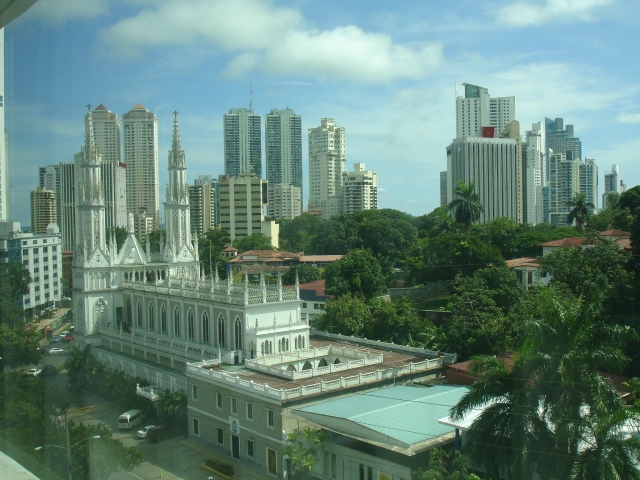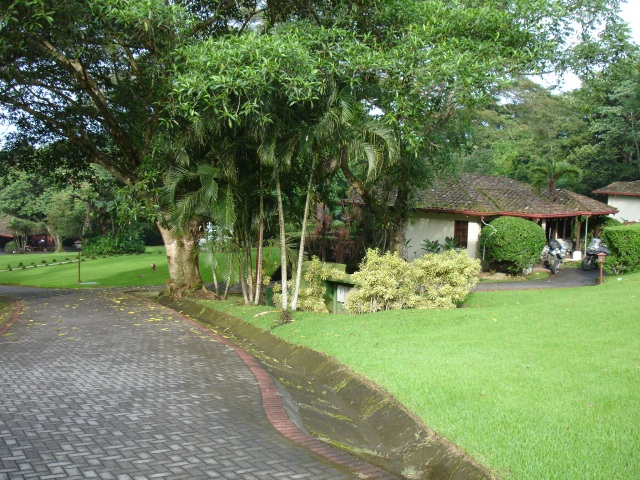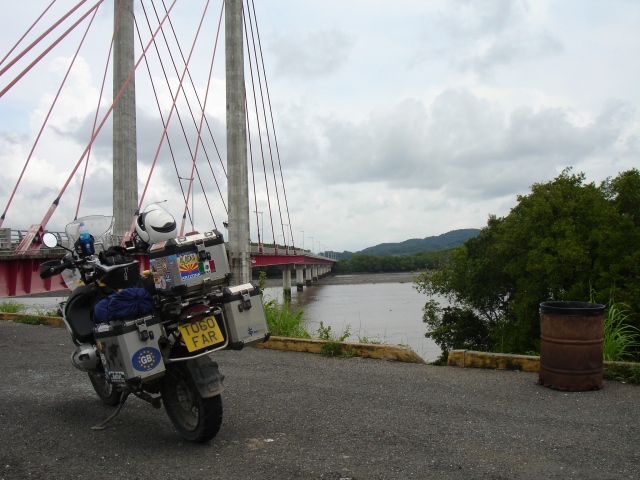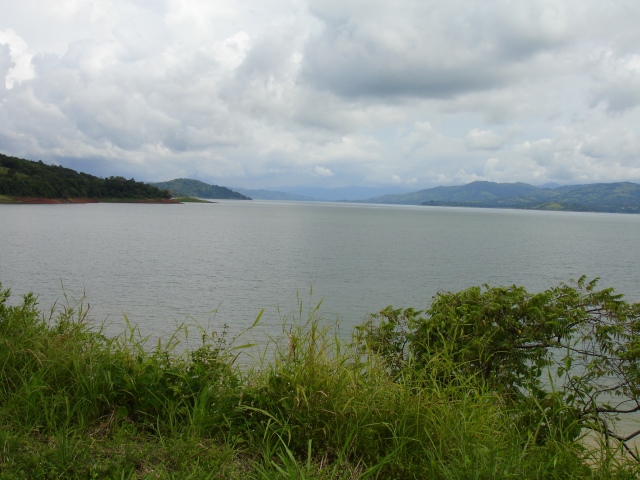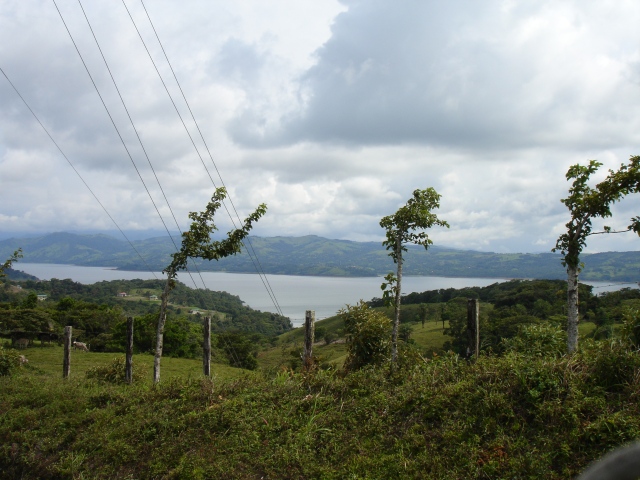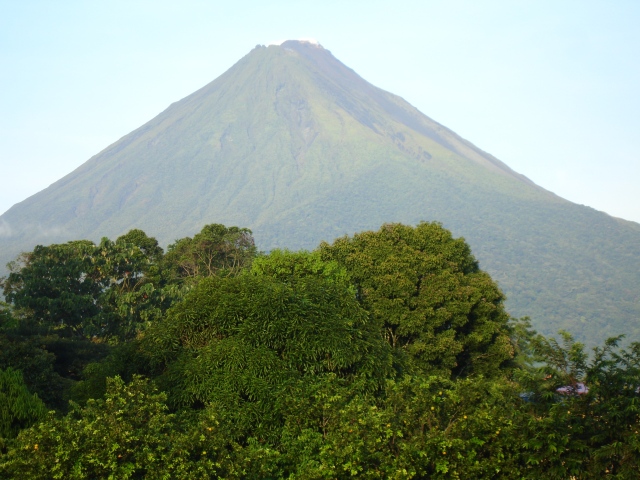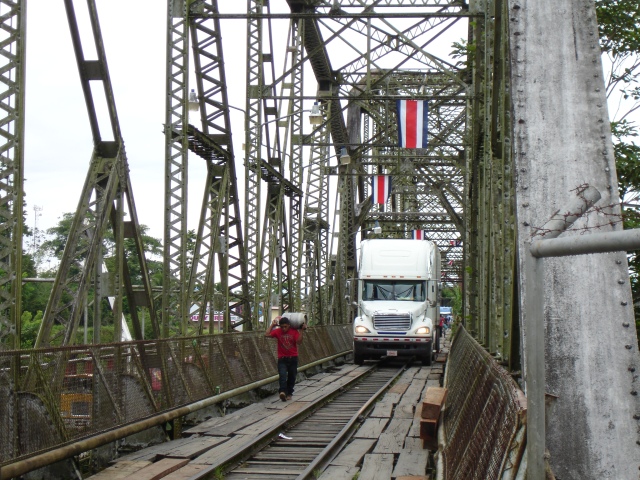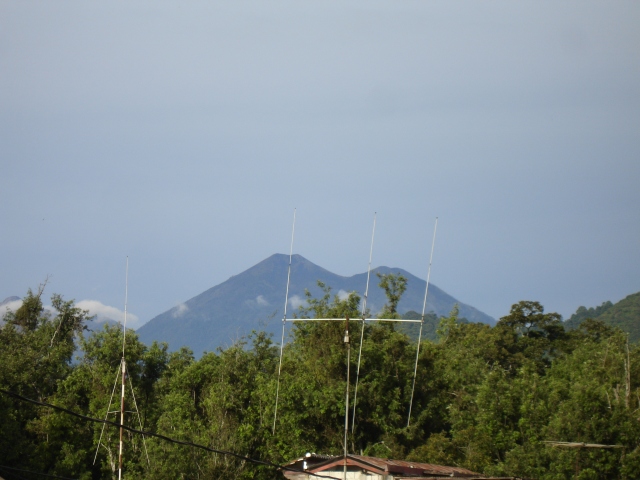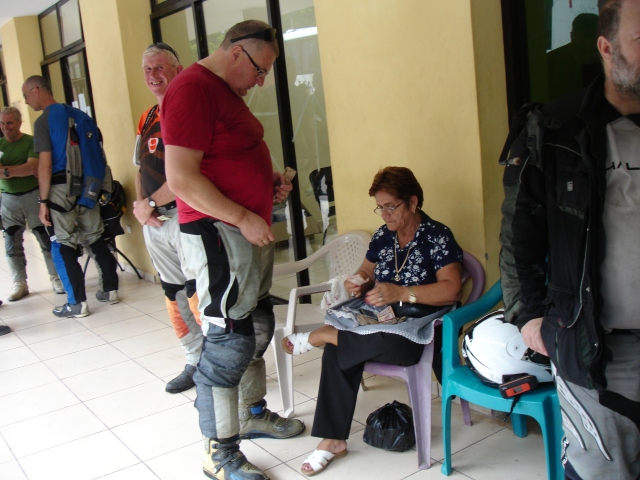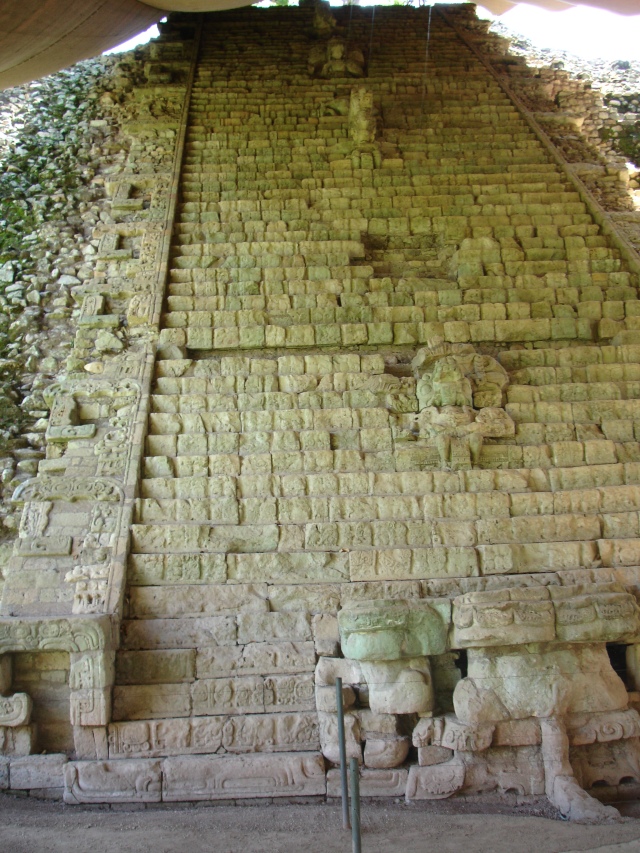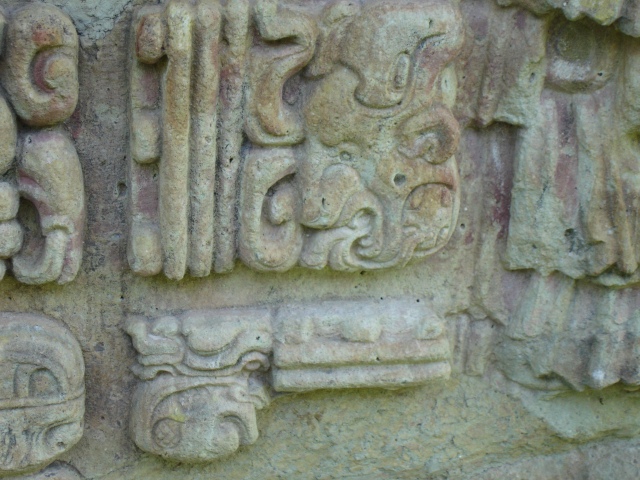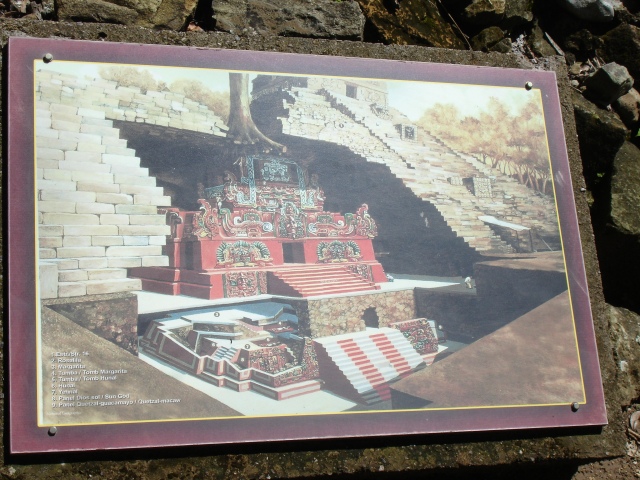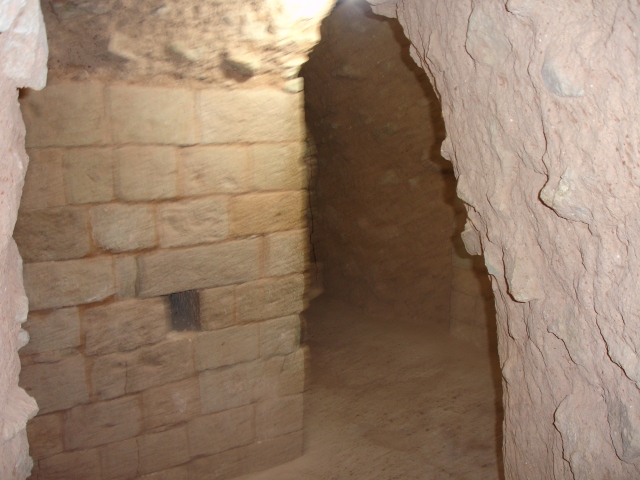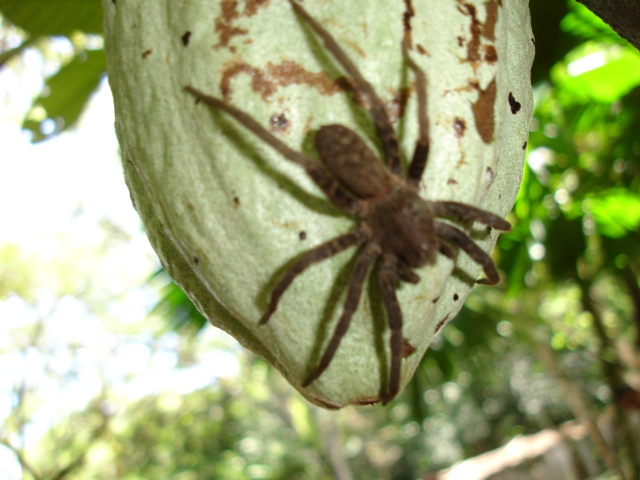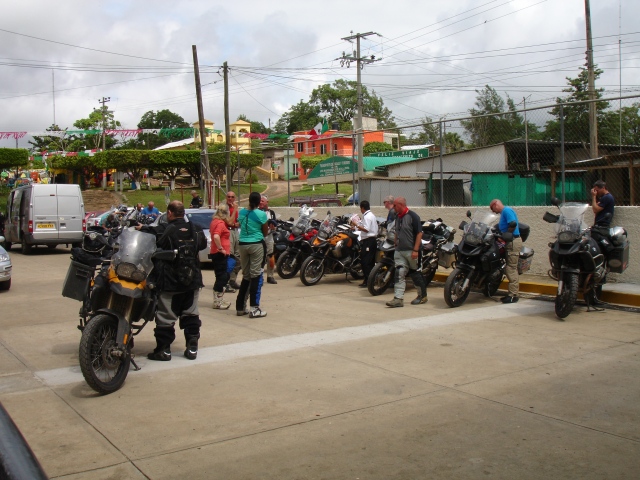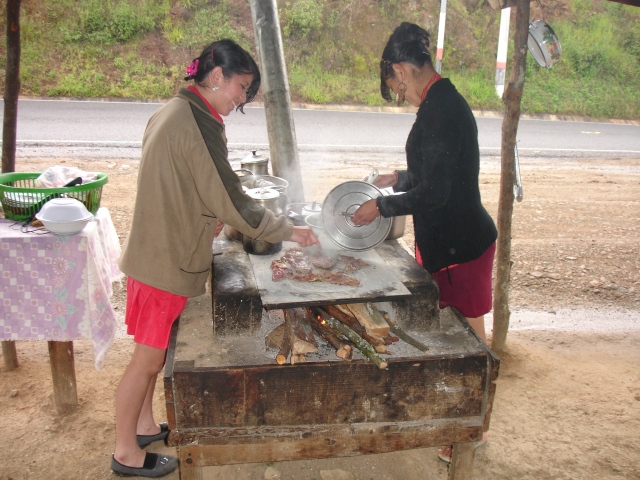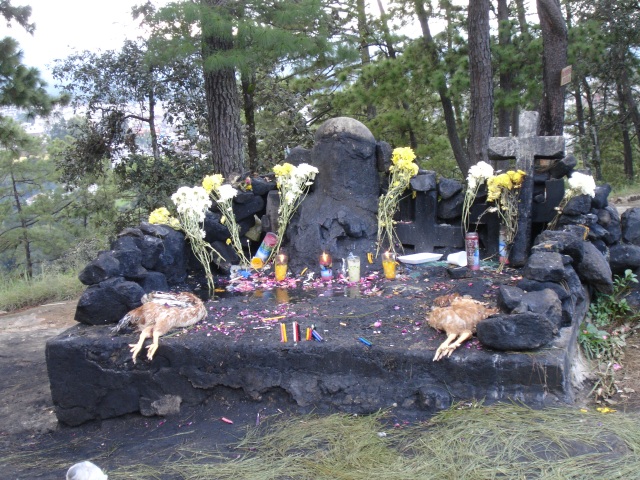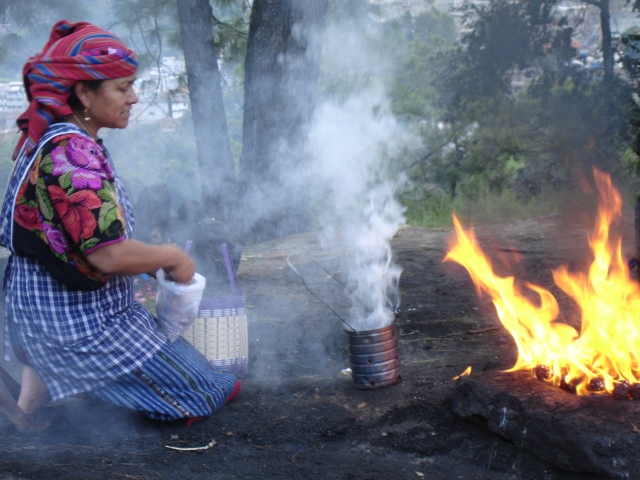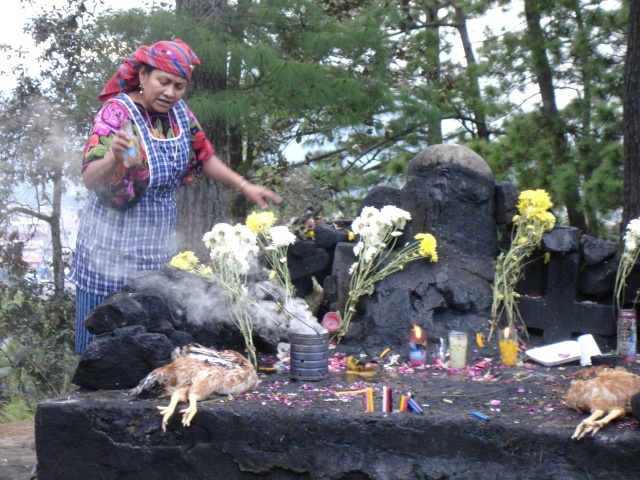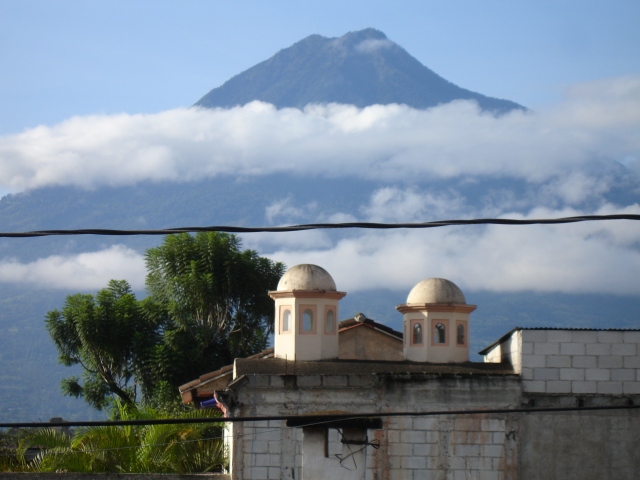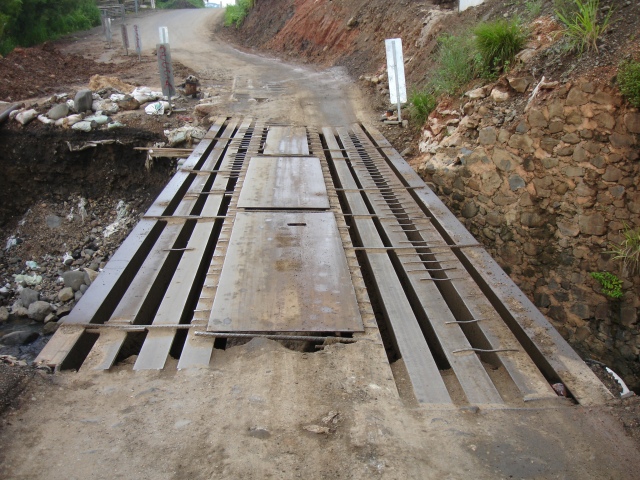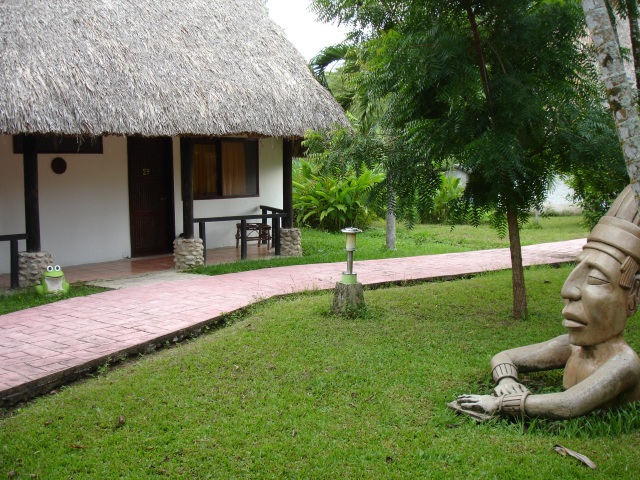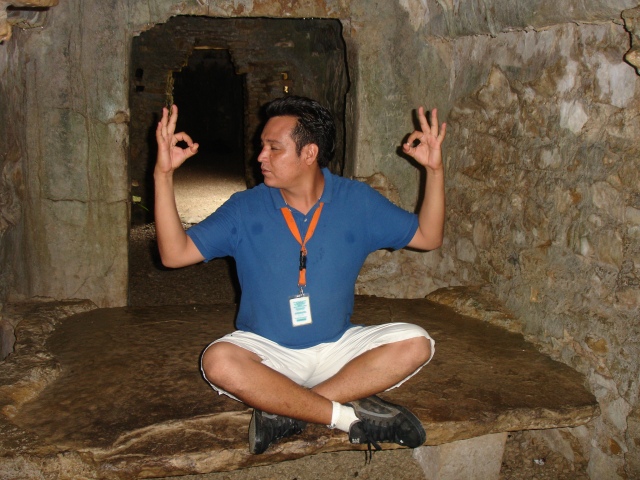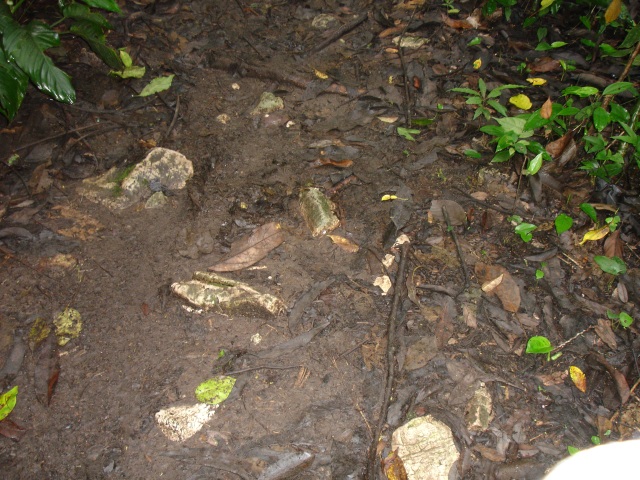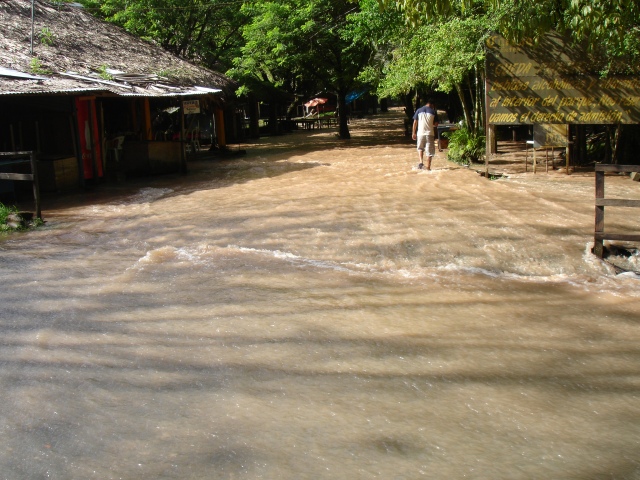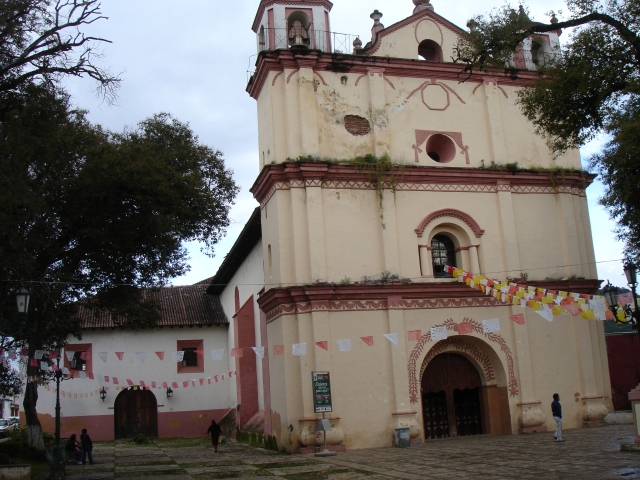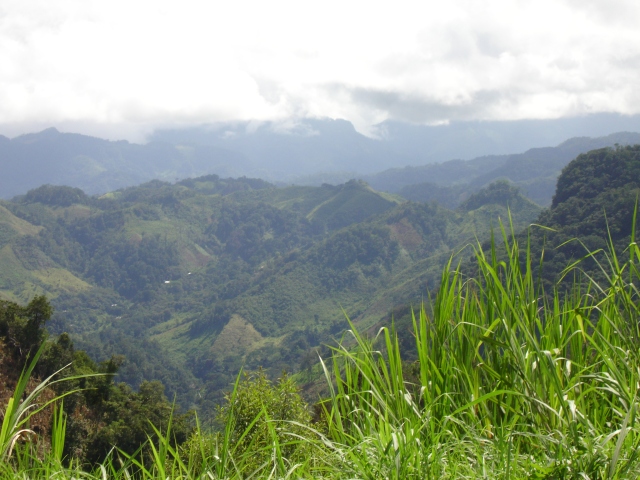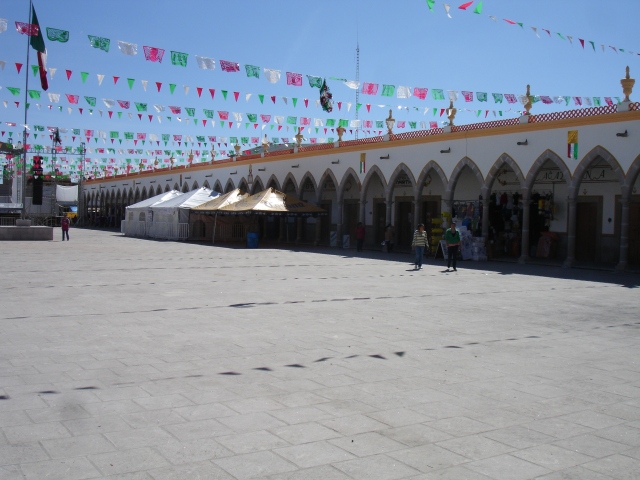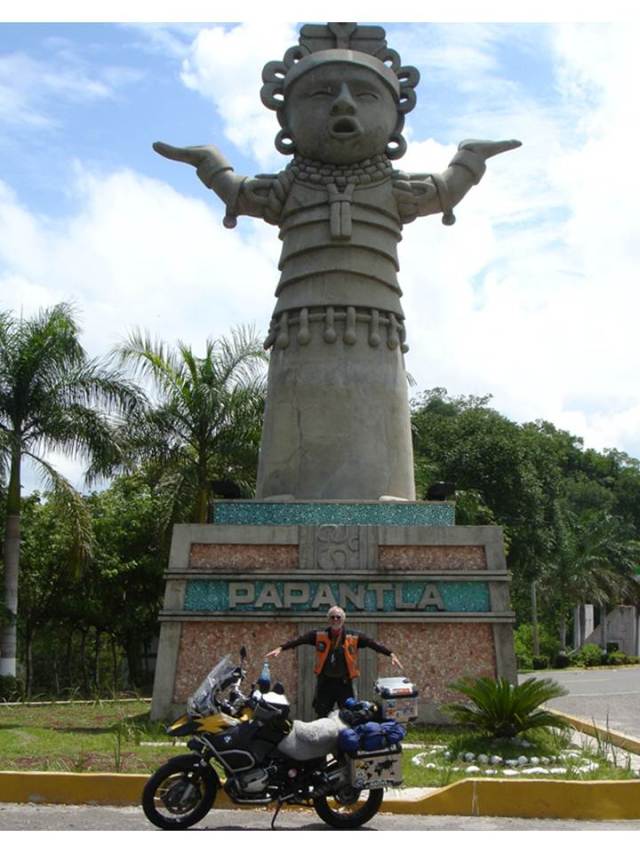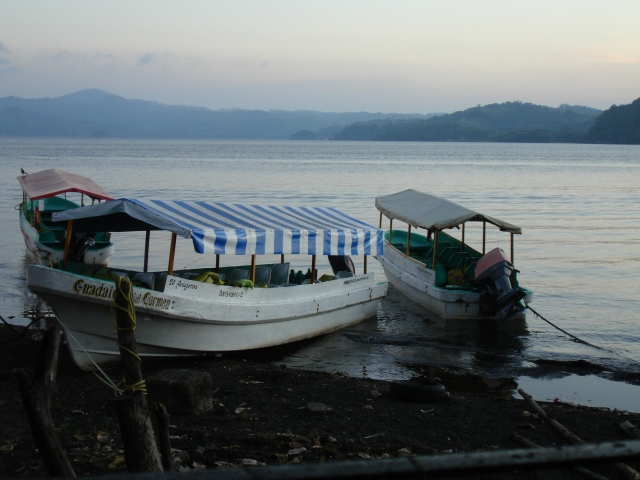Ecuador Border to Quito: 170 Miles: A race across the
equator against time!
The sun had shone during the long wait at the border crossing, but now the clouds were gathering as we set off. An early wrong turn delayed us by 30 minutes and with only 3.5 hours of daylight left and 150 still miles to go, it was going to be a challenge to make Quito by sunset, especially as we are passing the Equator as we go and of course need to document that in the appropriate photographic manner.
The road started to rise up again, and the mist turned to rain drops. Stopping to put on the waterproofs, in another 200 yards the heavens opened up and gave us a proper soaking for the next 5 miles or so. We heard later that the next group to escape the border process were caught in not just torrential rain, but a heavy hail storm leaving inches of ice on the road and causing a landslide which had to be skirted with a long detour before continuing.
The long wait in the border, lack of time to stop for lunch and increased concentration levels for the rain meant I was starting to feel weary. We stopped for a coke and an ice cream to build up sugar levels and sharpen the wits even though we were short of time. Mission accomplished we set off with new vigour and on excellent road surface began to make up time. I should mention here that the roads in Ecuador are really quite superb so far.
My first surprise in Ecuador is the temperature. Having lived and worked close to the equator in both South America and Africa, I am accustomed to hot, steamy, humid jungle type climate. But the fact that we are entering Ecuador through the Andes from 6,000 to more than 9,000 feet ab0ve sea level means that the scenery is more likely to have snow-capped peaks than tropical vegetation. I should have done more homework clearly! All of my winter clothes are neatly packed in my top case at the back of the bike, but my jacket is accessible, so on it goes and stays on for the next few days! My other immediate impression was the landscape usage. I was impressed in Guatemala by the family sized, well-tended subsistence crop fields, and here again Ecuador I see the same thing which indicates hard working people and family traditions of tending crops and taking responsibility for their own support.
The stop at the Equator is of course obligatory, notwithstanding the time pressure. One would think that this significant milestone on the Pan American Highway would be a well signposted tourist trap with many opportunities to relieve passing tourists of their vacation money. But although we had our GPS satellite Navigation set for 00 degrees, 00 minutes and 00 seconds, we had a hard time actually locating the monument. Some 10 minutes of double backs and circles around the ramshackle buildings and we stumbled across a gap in a fence, just wide enough for a bike to force its way through, and captured the photo we wanted.
It was now after 5 PM and with still around 50 miles to go we set out for Quito. The road rises on the outskirts of town and as traffic builds up the entry into town in the dark is not exactly desirable. The route notes only give an approximate geographic location and in a city of 1.4 million people this could have given us a problem. We stopped for fuel on the approach road, and by chance the support vehicle came by and gave us a chance to follow him to the hotel, Café Cultura, in the northern sector of town. All in all a long day, and quite tiring, but my first impressions of the country, city of Quito and the people we have encountered have been positive.
Quito – Day off: Basilica, Cathedral, Cable Car and Theatre….a full day
Quito is a modern, bustling, enjoyable city….but watch out for pickpockets. Fuel is subsidized at $1.50 – $2.00 a US gallon depending on octane rating, so taxi rides are very inexpensive. A typical 20 minute ride is no more than $2. Having consulted the tourist guides, the popular places to visit are the Basilica and Cathedral; as well as the other old colonial style buildings, palaces and official buildings in the old historic centre which is not only well preserved and maintained, but also easily accessible. On Sundays, it is even blocked off for pedestrians and cyclists.
On the night of arrival we went to a buzzing square just a short 5 block walk from the hotel with restaurants, bars, dancing, etc etc and crowds of people of all ages. Food was good and the prices very reasonable. On subsequent evenings we chose a slightly quieter place for dinner and found an excellent Italian restaurant called Cinquecento (“500”). Our tourist day was well spent. A short taxi ride to the historic district firstly took us to the basilica. I was with Monica, my riding companion, and another couple, Alan and Margaret. We of course wanted to climb the 374 steps to the top of the bell tower, but on the way up we were a little disappointed to find a lot of graffiti on the staircases, bell tower and intermediate levels. The basilica itself is a neo-gothic structure, started in 1892 and completed (if it can be called complete even now) in 1992. While the original Gothic cathedrals have stone mason crafted blocks, this one has concrete, and is not quite authentic.
Notwithstanding, the views from the tower over the city are impressive. The European concept of Health and Safety does not apply as the stairwells to gain access to the towers are exposed, steep and with poor hand rails. Not for people with vertigo!
Next on the agenda was Plaza Grande surrounded by the Presidential Palace on one side, the Municipal Palace on another, the Cathedral on the third and I cannot recall what else on the fourth!
A brief lunch in a local restaurant prior to discovering the Cathedral
was followed by a brief drama. A common trick played by pickpockets is to spray some foam or other liquid on the backs of tourists and while they are distracted, snatch the purse, camera, phone etc. As we were walking to the cathedral, with the ladies, Monica and Margaret in front, I saw a young man with a mustard bottle in his hand (presumably stolen from a restaurant), spray a line of mustard all over the back of Margaret. I grabbed his shoulder and in his surprise at being apprehended wriggled and ran away. As he was probably carrying a knife to slice through the shoulder strap of the purse, his escape was probably the best outcome.
But we did not let it spoil our afternoon. The entry to the cathedral was via the museum, on a side street. With only $1.50 entry fee and a free tour guide (I translated for the group), our expectations were not exactly high. We were surprised. The tour guide was excellent and very knowledgeable, and the tour lasted probably 2 hours. She earned a substantial tip!!
Our next adventure after walking around the downtown area was to catch a taxi to the cable car to mount Pichincha. At 4,100 metres(around 13,000 feet) it towers more than 1200 metres above the city.
The cable car was put in several years ago, along with a significant tourist infrastructure. Sadly the tourists just never showed up in the volumes expected and much of the infrastructure is now in disuse. The view of the city on the way up and back down is impressive as the city extends for miles in the valley. But at just over half way up the
cable car ride, the clouds obscured everything and at the top the visibility was around 50 metres….and the temperature no more than 8C! Brrrr…….
The final stop for the day was the National Theatre to see the Beijing Opera company peform a very Chinese classical opera….a lot of screeching and scraping instruments, but a good evening of culture anyway.
Quito to Quito: 200 Miles………a little adventure!!!
Today was supposed to be a longish day from Quito to Baños de Cuenca. With an early start we had hoped to not only explore the old colonial town of Cuenca, but also partake of the thermal springs of Baños. But, the best laid plans of mice and men…and all that or as the Spanish say “el hombre propone pero Dios dispone” or on other words things just did not turn out the way we expected. The plan was to leave by 6:30 and avoid much of the traffic exiting Quito. Setting off as three bikes, Allan and Margaret, Monica and myself, we headed south along the Pan American. Between traffic and fuel stops we separated, and feeling quite pleased with progress, Monica and I arrived in the town of Ambato at around 100 miles, by just after 10 AM. The roads were good and the traffic manageable. We stopped for a brief drink break just outside of town, but then a wrong turn on the by-pass and we were entering into the town outskirts. I was following, Monica leading. Her GPS started to act strangely so I took the lead. Having lost sight of her in my rear view mirror I turned back to find her somewhat concerned that she had lost her document wallet with passport, licence, credit cards and cash… seemingly she had taken it off from around her neck at the drinks stop to put on an extra layer against the cold and left it on the back of the bike….it had now fallen off somewhere, but as I had only taken over the lead in the past mile or so, it had to be in the vicinity. We searched up and down the road to no avail so contacting the group leader we set about filing a police report for lost documents.
Flagging down a passing police car we followed them to a police station and found that the process involved a lawyer to write the report, the police to accept the report and the ministry of the interior to stamp and authorize the report before it was considered ready…and of course each office was in a totally separate part of town! But speaking Spanish has its advantages, and as a Castilian Spanish speaker it seems to get attention. So with the “Denuncia” in hand, stamped, signed and authorized, we headed back to Quito to try to obtain replacement documents. Of course in the meantime phone calls to banks and credit card agencies to cancel the cards and emails to pass on requests to Monica’s spouse to take care of arranging new ones.
We arrived back in Quito just in time to miss the US Embassy by 5 minutes. But armed with requisite paperwork the following morning at 06:45 we arrived at the embassy at 7 and as an American Citizen she was given priority treatment. In 2 hours she had a new passport, albeit with only 6 pages for entry/exit stamps. Easy part over..now to Ecuadorian government office to get an immigration stamp…. Again with copies of old and new passports, the stamp was duly placed in new passport within an hour.
Next American Express Office to try to arrange a new AmEx card, cash facility and ensure cancellation of old card had taken place. An hour or so later, mission accomplished and card could be issued in Santiago, or Cuzco, or somewhere else and cash facility set up too. Final task was the replacement of the temporary import document for the motorcycle with the Customs agency. According to the paperwork which we received at the frontier, and of which I still had my copy, if one loses the document you have only to show up at the local customs office and they can print you a new one from the computer system. Sounds simple….but after visiting 3 customs offices and receiving multiple blank stares when we showed them my documents and the apparently simple process we were beginning to be concerned. We had also wasted more than an hour waiting on various people to come back from lunch only to find they could not help us. Eventually we
found someone who could help..or at least find help. He was in charge of the “Frontier Security Office” which was next to the “Frontier First Line Office”. He walked around the various office for us and found someone who was responsible for duplicate documents…..but he required a physical inspection of the bike again.
So a taxi ride back and then on the bikes to the airport offices of the customs agency…..and of course there was also the question of a type written official looking, letter to explain why the other document had been lost. With my best Spanish and pleading look we asked our new found friend in the Security office if we could borrow his secretary to write the letter for us. To our surprise the officer himself took it upon himself to personally write the letter and walk us through the process.
Letter submitted we waited for the final copy of the documentation to be printed…..and waited…and waited…the officer was in a meeting….the office closes at 5PM…..still in a meeting…….4:59PM..officer shows up and signs the letter. All in all not a bad day…passport, immigration stamp, AmEx and Customs all accomplished. Exhausted but happy, it was another Italian meal!
Quito to Loja: 420 Miles – Catch up part 1
The rest of the group had already left two days before, as we did, but returned to Quito. We now had to catch up which meant riding a day-and-a-half distance for two days. And a border crossing all without support. I forget to mention that one of our other riders was also delayed in Quito with some mechanical problems, so there were three of us.
We set off early, but the requirement to drop additional papers in the US Embassy delayed our departure from Quito until 8:30. With the US Embassy on the North side of town, and us heading South. We had to cross the entire city in the morning rush hour which took more than an hour to accomplish, notwithstanding some “assertive” driving. But once on the excellent roads outside of the city we picked up a good pace. With long stretches of 4 lane highway, and good 2 lane in between, and with only moderate traffic we made good progress. But there was no time to stop for photos. I did grab a couple simply because Cotopaxi volcano was too good to miss and the mountain scenery we passed through was indeed breathtaking.
We spent the day between 7,000 and 11,500 feet in the Andes and arrived on the outskirts of Loja as it got dark. Some roadworks sent us onto deep mud and gravel, impossible to “read” with just headlights, but we made our way through. Stopping for fuel on the edge of town we found some police motorcycle riders who came over to chat and ask what we were doing. I asked if they would like to provide an escort to our hotel, so with blue lights flashing and a 4 bike convoy we were whisked through the evening traffic to our hotel in style. We invited them to join us for a drink….a soft drink, of course!
The hotel was good, but with breakfast only being served from 7 Am, and with 120 miles to the border and 230 miles the other side, we left as early as we could. The road to Loja was excellent as have been nearly all the roads in Ecuador. But the road to the frontier was the worst we have encountered so far. No significant potholes or landslides, but constant patches of tarmac over older patches, and impossible to gain any real speed as we dropped through innumerable bends and switchbacks from 8,000 feet to almost sea level at the border over 120 miles.
Arriving at the border after midday we first of all exited ourselves from immigration, and then our bikes which as usual involved an inspection and documentation verification to make sure it was the same bike we came in with. As Monica’s documentation was all replacements for the originals there was the possibility of problems, but all went well. Now drive across the bridge to the Peru office. Again personal passport entry followed by entry of the bikes through customs. Again no problems, but when we started the customs process the officer asked me to sit with him at the desk to walk through all the computer entries and paperwork. I did mine first to learn the process, followed by the other two. Of course with a Brit, American and Australian registered bikes, there were three different processes!! We were on our way, with 230 miles to go, by around 3 PM…welcome to Peru!


